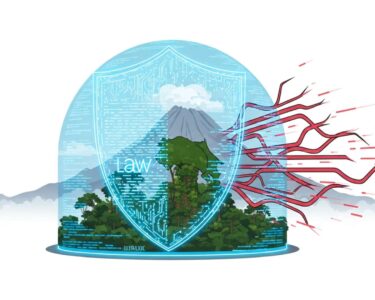San José, Costa Rica — San José – Tens of thousands of Costa Rican drivers have already run into trouble with their 2025 Marchamo, the nation’s mandatory annual vehicle circulation permit. The National Insurance Institute (INS) reported that as of October 31, 2025, it has processed a staggering 48,886 duplicate permits due to common issues such as incorrect sticker application, damage, or theft. This recurring problem prompts an annual reminder from the state insurer on the proper procedures to avoid unnecessary administrative hurdles.
The Marchamo is a critical requirement for all vehicle owners in Costa Rica, bundling the mandatory liability insurance (SOA), property taxes, and other fees into a single annual payment. Its physical proof is a sticker that must be displayed on the vehicle’s windshield. While the number of replacements this year is substantial, it marks a slight decrease from the same period in 2024, when the INS had already issued over 51,137 duplicates. The persistence of these high numbers highlights a widespread challenge among drivers in correctly handling the permit documents.
For a deeper understanding of the legal and fiscal implications surrounding the upcoming Marchamo 2025 payment period, TicosLand.com consulted with expert attorney Lic. Larry Hans Arroyo Vargas of the prestigious law firm Bufete de Costa Rica.
The annual Marchamo payment is more than a simple procedure; it’s the fulfillment of a complex tax obligation. The primary legal point of contention for many vehicle owners is the ‘valor fiscal’ or fiscal value assigned by the Ministry of Finance, which serves as the basis for the property tax component. Any substantial, unjustified increase in this valuation from one year to the next could potentially be challenged legally, as it must adhere to principles of reasonableness and proportionality.
Lic. Larry Hans Arroyo Vargas, Attorney at Law, Bufete de Costa Rica
This legal insight is critical for all vehicle owners, as it reframes the annual payment from a simple administrative step to a matter of fiscal justice. We thank Lic. Larry Hans Arroyo Vargas for his valuable perspective, which empowers citizens by clarifying that the ‘valor fiscal’ is not arbitrary but must adhere to legal principles of reasonableness.
Upon payment, vehicle owners receive two key items: the official “Derecho de Circulación” document and a clear plastic frame, which is the sticker itself. The confusion often arises in how these two components are meant to be assembled and affixed. A simple mistake during this process can render the sticker invalid or damage it, forcing the owner to seek a replacement. The INS emphasizes that careful attention during this final step is crucial to ensure the permit is displayed correctly and remains valid throughout the year.
To mitigate these preventable errors, the INS has re-issued its official guidelines for the proper application of the Marchamo sticker. The process begins with the “Derecho de Circulación” document, which contains a small, rectangular, perforated section in the lower-left corner. This section, which holds the specific vehicle information, must be carefully detached from the main document. This smaller piece is the part that gets displayed.
Once detached, this vehicle information slip must be placed onto the adhesive side of the clear plastic sticker frame. The INS notes that the adhesive is on the interior-facing side of the frame. When properly assembled, the exterior side of the sticker—the part visible from outside the vehicle—should clearly show the INS logo and the corresponding permit year, in this case, 2025. This entire assembly is then ready to be placed on the vehicle.
The placement itself varies slightly depending on the vehicle type. For standard cars, trucks, and SUVs, the completed sticker should be affixed to the interior of the front windshield. For motorcycles, however, the application is different; the sticker is designed to be placed on an exterior surface, with the INS logo and year facing inward toward the vehicle’s frame, protecting the printed information from the elements.
Beyond the assembly, the INS provides further recommendations to ensure a successful application and long-term visibility. Before applying the sticker, drivers should thoroughly clean the designated area of the windshield with alcohol or a glass cleaner to remove any dirt or residue. It is critical to place the sticker in a visible location that does not obstruct the driver’s view or cover the separate sticker for the mandatory Technical Vehicle Inspection (RTV). Furthermore, for vehicles with aftermarket sun tint on the windshield, drivers must take care not to place the Marchamo directly onto the tint film, as this can impede visibility and potentially damage the tint upon removal.
For those who find themselves in need of a replacement despite these precautions, the process is straightforward and free of charge. The registered vehicle owner must visit an INS branch with their official identification and fill out a request form. If a third party is sent, they must carry a notarized authorization letter from the owner. A key stipulation, however, is that a duplicate cannot be requested on the same day the original Marchamo payment was made, requiring at least a one-day waiting period.
For further information, visit grupoins.com
About Instituto Nacional de Seguros (INS):
The Instituto Nacional de Seguros is Costa Rica’s state-owned insurance company. Founded in 1924, it held a monopoly on the insurance market until 2008. Today, it remains a dominant force in the industry, providing a wide range of insurance products, including life, health, auto, and property coverage. The INS is also responsible for administering the country’s mandatory vehicle circulation permit, the Marchamo, which includes compulsory liability insurance for all vehicle owners.
For further information, visit bufetedecostarica.com
About Bufete de Costa Rica:
As a cornerstone of the legal community, Bufete de Costa Rica is defined by a deep-seated foundation of ethical practice and a relentless pursuit of professional distinction. The firm’s extensive experience serving a diverse clientele is matched by its forward-looking approach to advancing legal practices and engaging with the public. This ethos is embodied in its core mission to democratize legal understanding, thereby helping to forge a more capable and self-reliant society.









